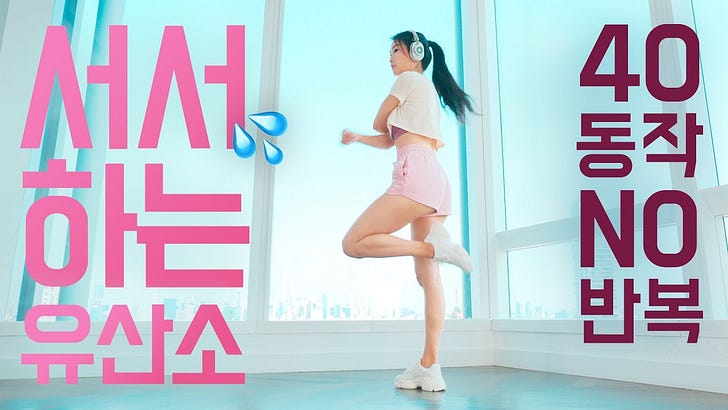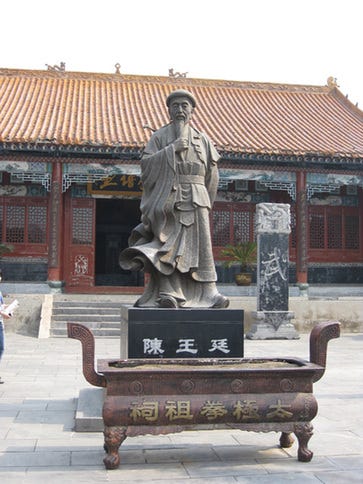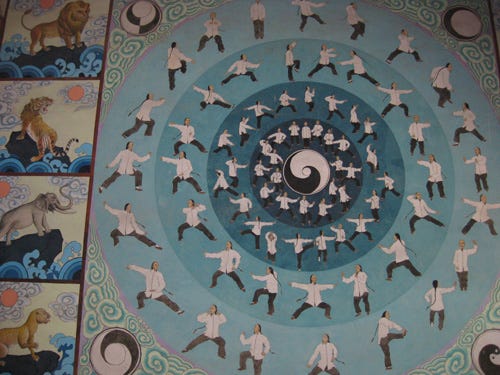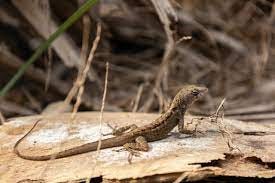The below link mentions some practices associated with ancestor veneration in the household, with some quotes followed by information on Ancestors of Qigong.
https://www.reddit.com/r/China/comments/1d0wnc4/home_altars_for_ancestor_worship/
Is there some small gesture people make to acknowledge the altar?
For close relatives you could put your palms together and bow once to greet them. Don’t bow too deep or more than once. My dad is 96 and greets his mom whenever he comes home or leaves the house. He even says “hi mom, I’m home”
My grandmother has altars in her HK and Taipei flats and will pray to dead relatives daily before breakfast. I remember being woken up when I was small by the incense smell and bowl ringing when we'd stay with her .
I keep a small altar for tradition in our main home that I don't use,and then small shrines to Mazu and her 2 門神 in our houses that are in the tropics,because they're all near the sea and our lives and lifestyles are very linked with the sea-superstition more than actual belief I think.
A Qigong Flow video, then following is more quotes from above link:
Home Altars (for Ancestor Worship)
Does anyone have any experience with this? Is it a traditional thing in China, and do people still do it?
I would like to verify for my own research for a story I'm writing. I watched a Youtube video of an old Chinese gentleman lighting 3 joss sticks, bowing 3 times with the sticks in hand, then sticking them into the incense burner to pay respects to their ancestors. All done at home.
Apparently it's done during the Qing Ming festival, but can it also be done on any regular day that you want?
I do it everyday. Wash teacups, serve fresh tea, burn incense. And on the 1st and 15th of the lunar months, I put fresh fruit and rice wine on the altar. And during festivals like cny, I add chicken, pork and other traditional food.
Thank you very much for sharing your experience! Do you light 3 joss sticks then bow 3 times? How is your altar like? Is it set on a table inside the house, etc?
I indeed bow three times. The number of sticks varies. I only do three sticks on festivals. The reason is that I have 3 additional altars, one for the earth deity, one for the heaven deity and one for guan Yu. With 3 joss sticks in each, my house will become pretty foggy. Some people don’t bother lighting joss. Instead, they have joss-shaped lamps that are permanently lit.
We have an altar area with portraits of our ancestors at my mother's house. There's some LED joss sticks glowing.
During festivals and holidays we'll burn some real ones for them with the 3 bows.
The beginning of the below video shows people kneeling and bowing to the statue of the founder of Tai Chi, offering incense and libation. I am not sure what the verbal part of the ceremony is or if people say prayers petitioning for anything.
In the Prose Edda is a book called Gylfagining where it is said of The Gods:
King Gylfi was a wise man and skilled in magic; he was much troubled that the Æsir-people were so cunning that all things went according to their will. He pondered whether this might proceed from their own nature, or whether the divine powers which they worshipped might ordain such things.
https://www.voluspa.org/gylfaginning1-10.htm
Above hearkens of a religious belief in the ability for The Gods to grant boons.
The above link also mentions three high seats which is similar to seats for The Gods described by Adam of Bremen regarding a Temple at Uppsala.
Qigong Exercises are associated with The Wudang Mountains.
Zhang Sanfeng:
The legend recounts that Zhang Sanfeng was a highly skilled martial artist and Taoist sage who possessed extraordinary abilities and wisdom. Renouncing worldly pursuits, he retreated to the sacred mountains of Wudangshan, where he devoted himself to the study of Taoism, meditation, and martial arts in seclusion.
One day, while meditating in the mountains, Zhang Sanfeng witnessed a confrontation between a snake and a crane. Intrigued by their fluid movements and harmonious interaction, he was inspired to develop a new martial arts style that emulated the natural principles of Yin and Yang, balance, and harmony.
The temple of the founder of Tai Chi, Chen Wangting, at Chenjiagou, Wenxian county, Jiaozuo, Henan. The bronze statue of Chen Wangting at the temple of the founder of Tai Chi:
https://www.chinadaily.com.cn/regional/2010-06/01/content_9918368_2.htm
A picture of Tai Chi moves at Chenjiagou, Wenxian county, Jiaozuo, Henan:
Below is some moves in Tai Chi (Yet simple Qigong Exercises were also developed for longevity)
Simple Qigong Exercises
and:
Hatha Yoga Routine:
Simple Qigong Exercises:
https://www.youtube.com/@ChineseCulture1
坚持就是胜利 (jiānchí jiù shì shènglì) – Persistence is victory






